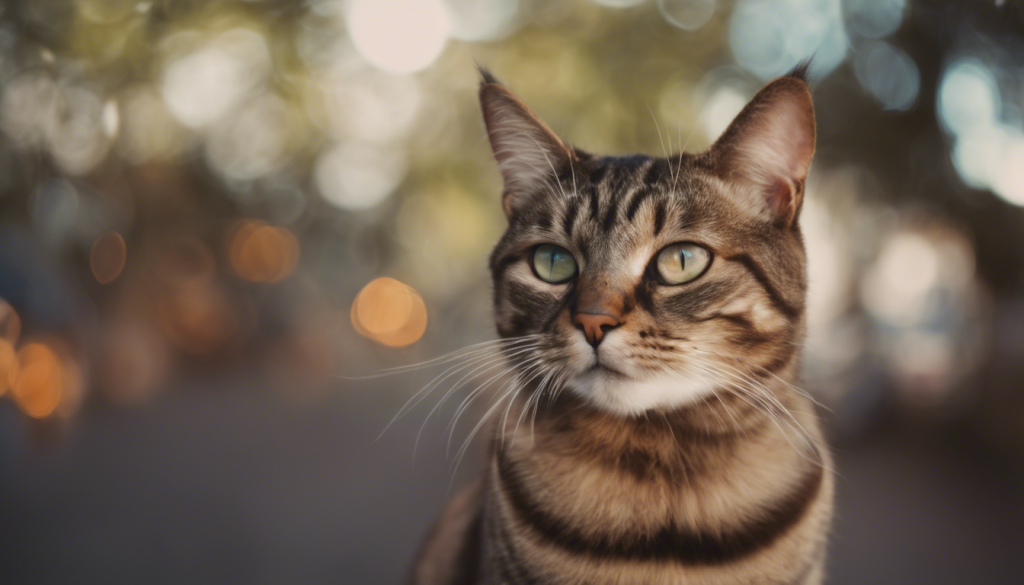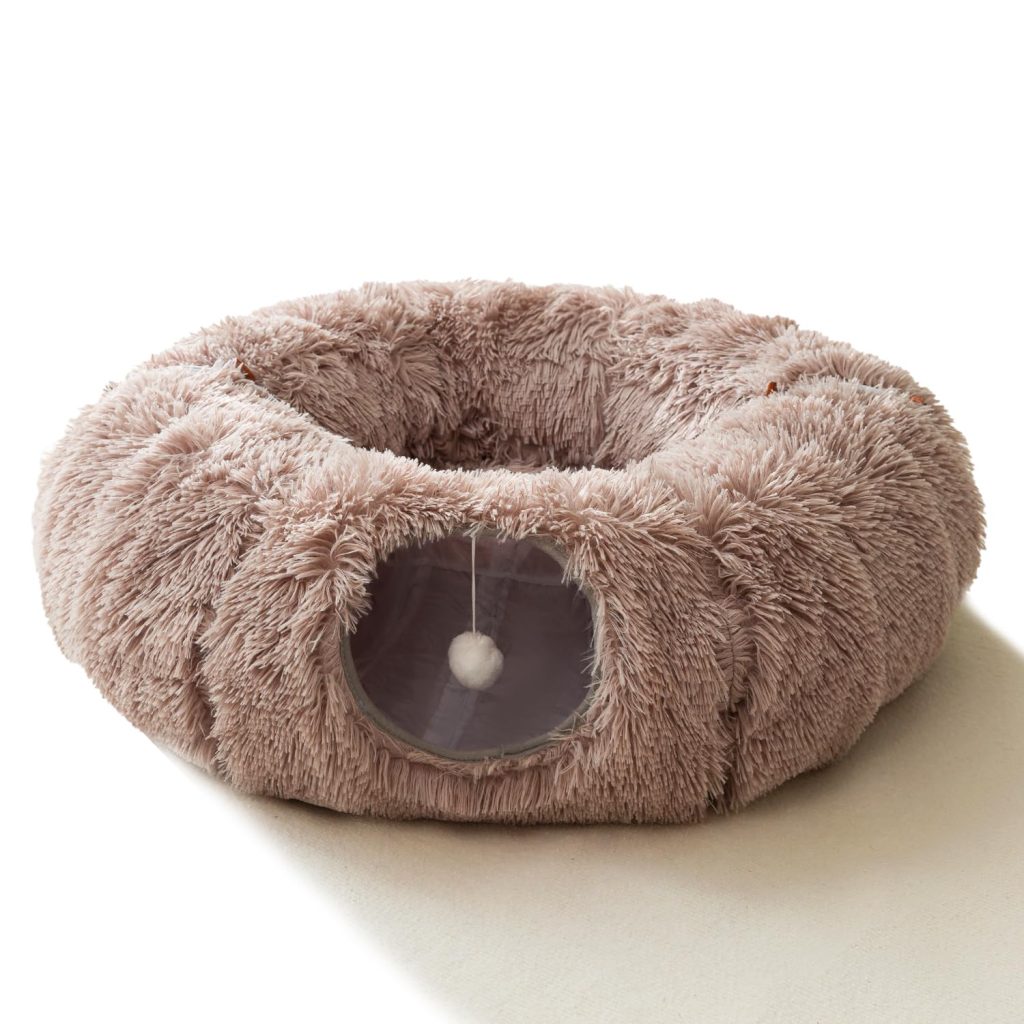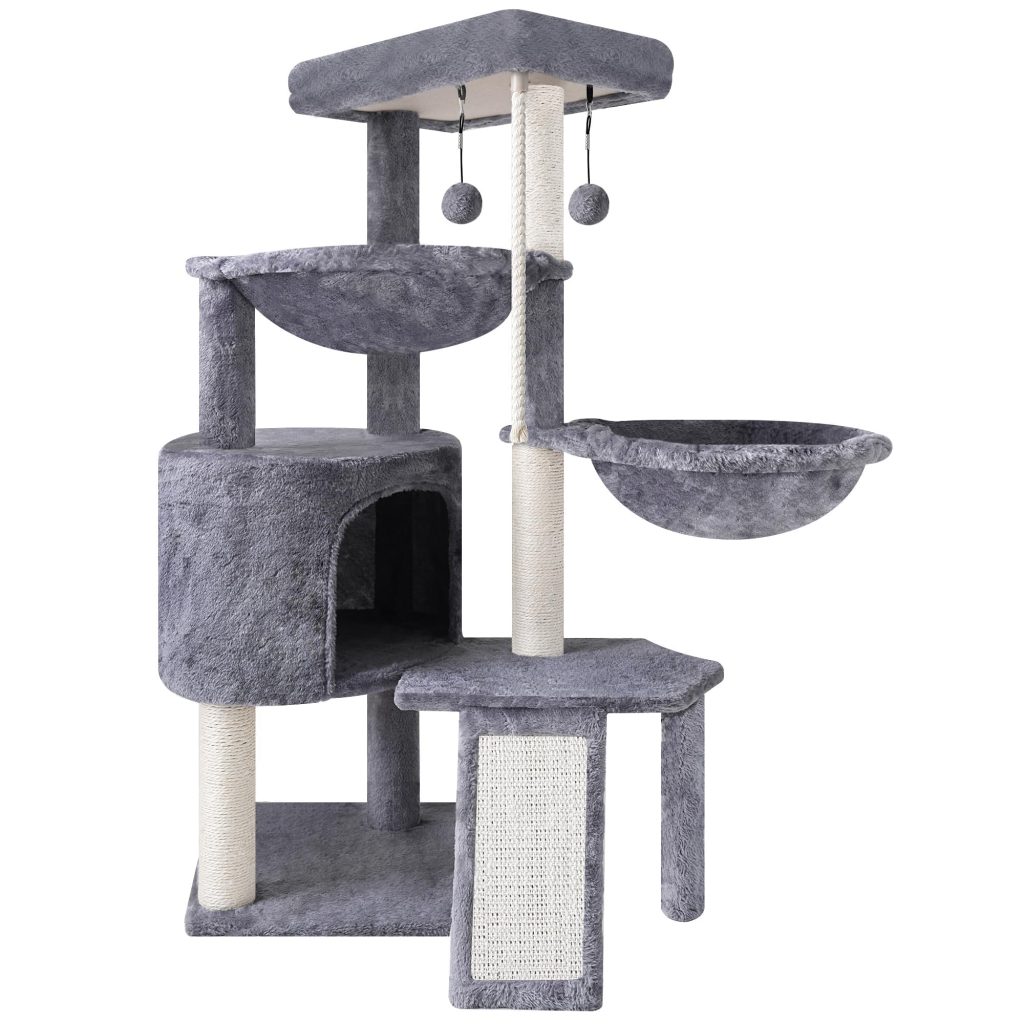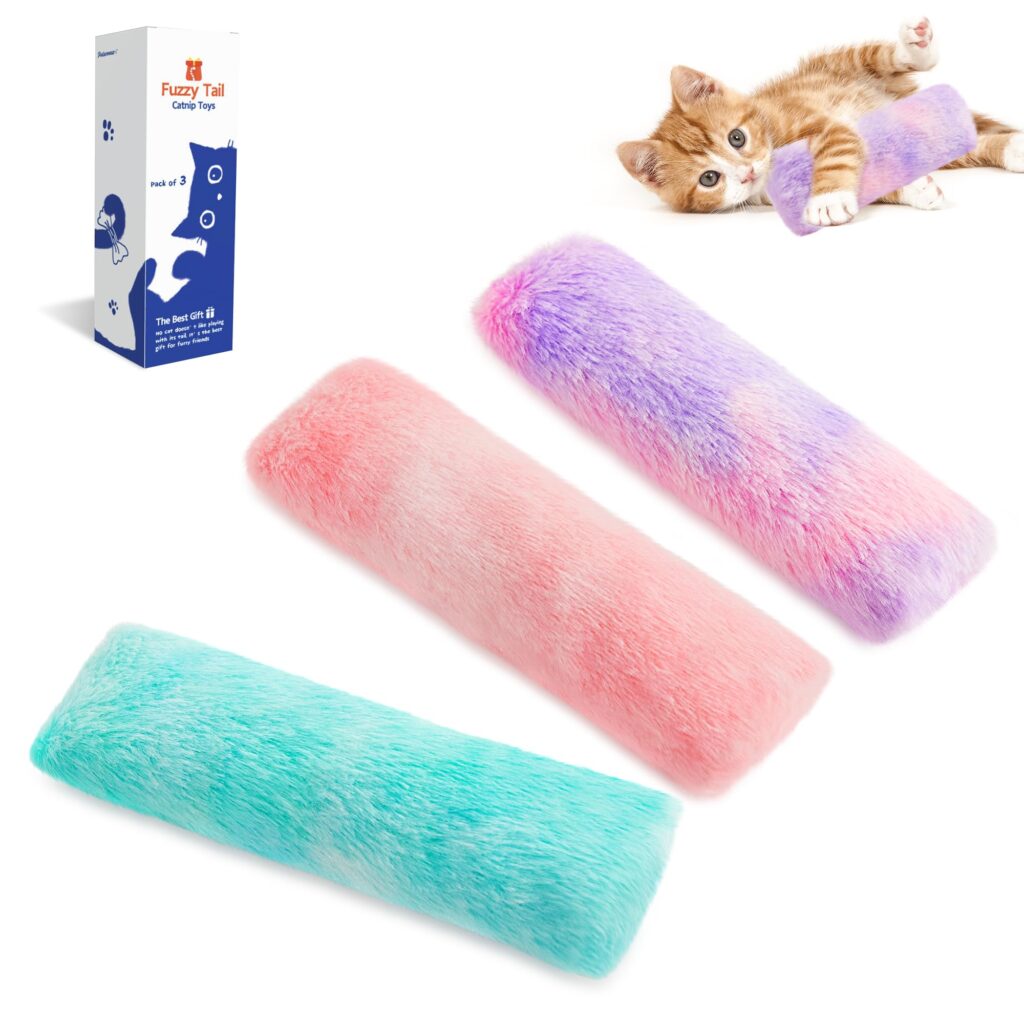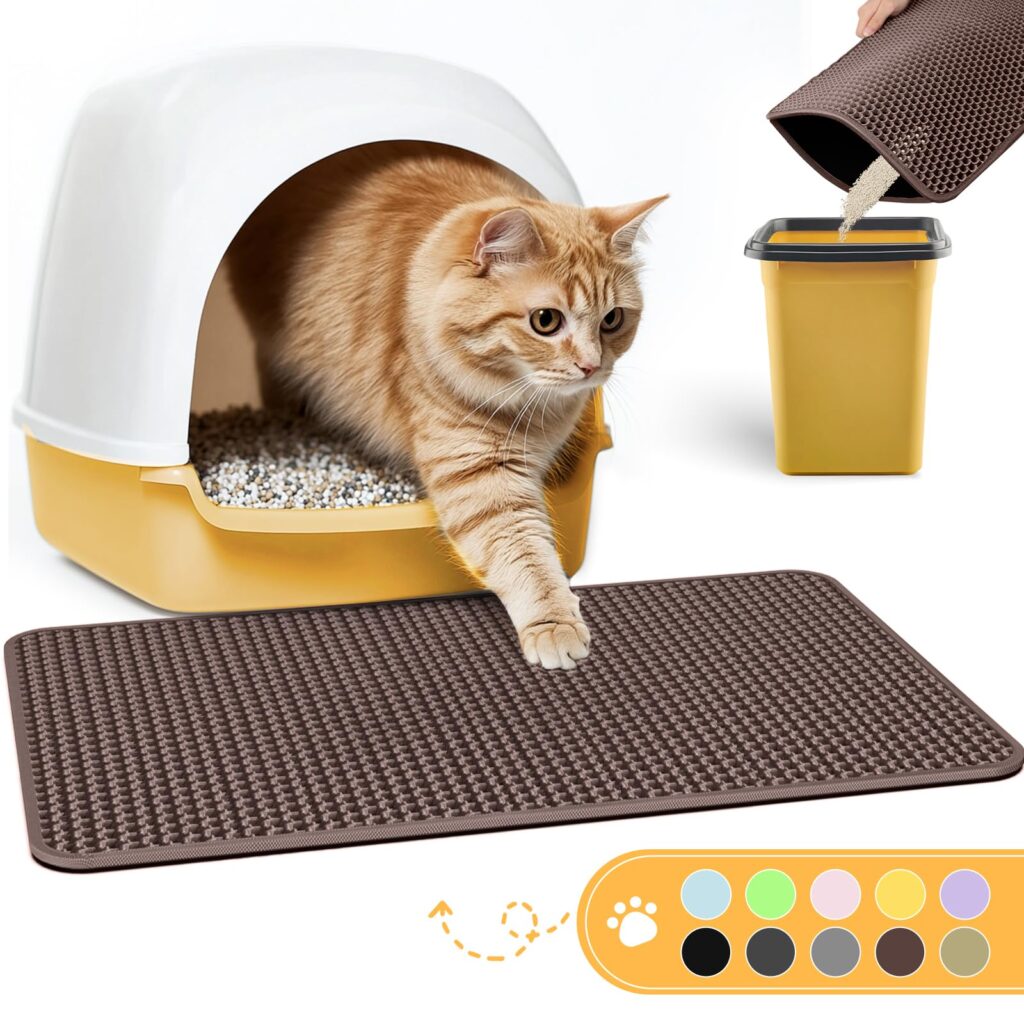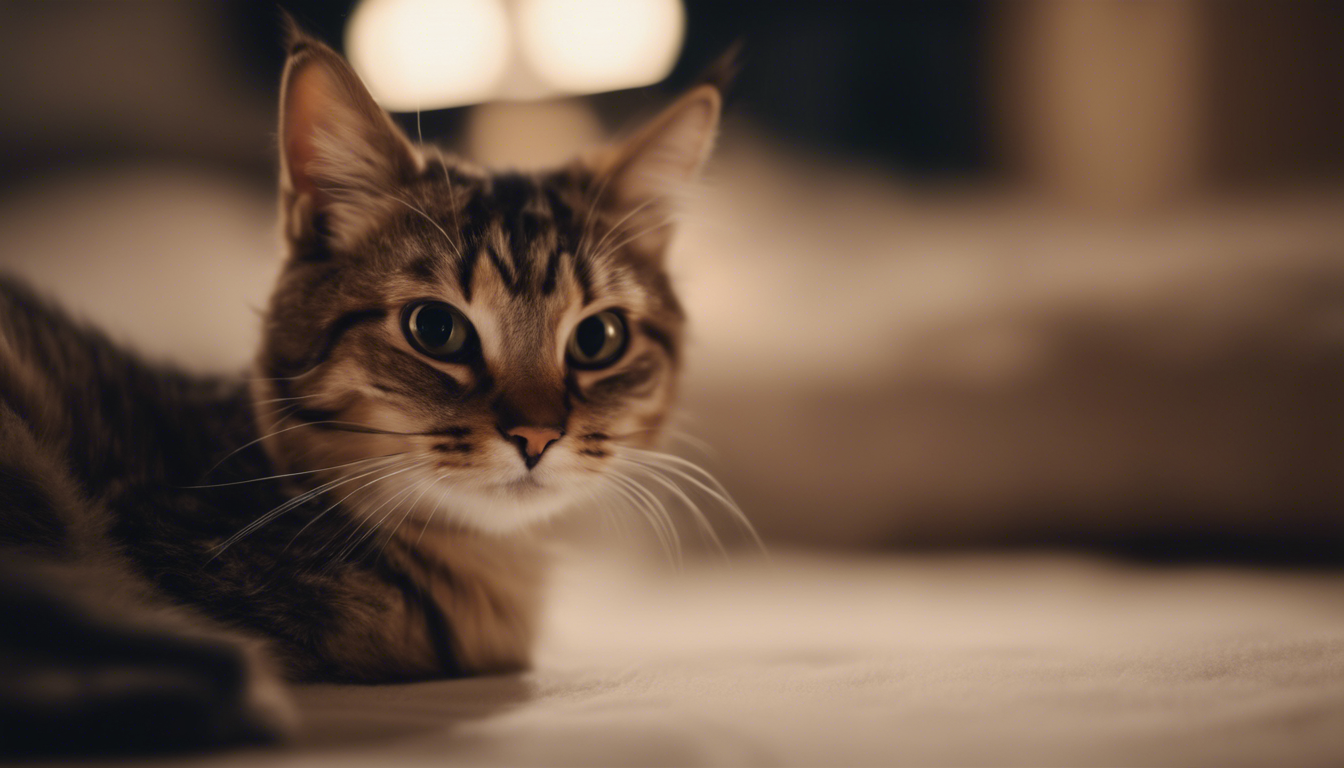
Decoding nocturnal behaviors in cats
Does your furry friend seem to come alive just as you’re turning in for the night? Cats are naturally crepuscular, meaning they are most active during the twilight hours. This might sound charming, but it can lead to some late-night antics that have you bleary-eyed at breakfast. Becoming a cat behavior detective helps not just in understanding these peculiar habits but in managing them too.
So, what’s the deal with your cat’s energetic night sprints, or “zoomies”? Cats often exhibit bursts of energy where they run around the house at full throttle. This could be an instinctual reflection of hunting behavior, or simply a release of energy after a day of lounging. Those sudden midnight zooms mimic the cat’s natural practice of stalking their prey at night.
But the nighttime enthusiasm doesn’t stop there. You may also hear vocal concerts or find your cat engaging in a solo game of soccer with that small jingle bell toy. Meowing, yowling, or knocking items off the counter are all a part of your cat’s complex communication system and can signal anything from boredom to a territory broadcast. While endearing during the day, these behaviors can be a bit less adorable at 3 AM.
Then there are the toe nibbles and whisker tickles you might get as you slumber. Your cat’s debate between cuddling and playful pouncing can result in a rude awakening. This interactive behavior is often their way of saying they want attention or, paradoxically, could be their innate way of making sure you’re still in one piece.
Scratching, another common nocturnal habit, is a cat’s way of both keeping their claws in top-shape and marking their territory. Your cat isn’t trying to ruin your furniture in a midnight rebellion, but instead is following a natural instinct to protect their environment, which unfortunately to them includes the corner of your brand-new couch.
Understanding these behaviors is critical because what can be mistaken for mere mischief or malice is often a display of deeply ingrained, natural instincts. Embrace your inner feline psychologist and remember, your cat isn’t plotting to upend your sleep schedule, they’re just being a cat.
Tips for adjusting your cat’s sleep cycle
When your nighttime routine involves more of a “cat chase” dance than a graceful waltz into dreamland, it might be time to help your feline friend adjust their sleep cycle to match yours more closely. While we can’t turn a cat’s internal clock into a punch-in, punch-out schedule, there are steps you can take to encourage a more peaceful co-existence when the moon is up.
Start by establishing a consistent routine. Cats, much like humans, thrive on predictability. Set fixed times for meals, play, and quiet time. You might be surprised how responsive your cat can be to a regular schedule. Breakfast in the morning can be a great way to encourage your night owl to adjust their internal clock, as a full belly after sunrise sets a natural cue to wind down.
Consider an evening play session as a pillar of your night-time schedule. A good romp with a feather wand or laser pointer can help burn off the excess energy that would otherwise fuel midnight escapades. Follow this with a pre-bedtime meal—the ultimate combo for a snooze fest, as a cat’s natural instinct is to sleep after hunting and feeding.
Leverage the power of light and dark to your advantage. Cats’ circadian rhythms are sensitive to light cycles. Use this sensitivity to help reset their internal clock by controlling the lighting in your home. Dim the lights as bedtime approaches to signal that it is winding down time, and use blackout curtains to keep the early morning light from prompting an undesired wake-up call.
Avoid accidentally reinforcing unwanted behavior. If your cat pounces on you or cries for attention in the middle of the night, responding to them—even with a scold—can reinforce the behavior. Keep interactions at night to a minimum, and if you must respond, do so quietly and calmly without giving rise to a stimulating game or a late-night snack, which could lead to repeat performances.
Lastly, provide an appealing and comfortable sleeping area for your cat. While some cats will happily sprawl across your pillow, others may enjoy a cozy bed of their own in a quiet corner of the room. This designated spot gives them a perfect retreat for the night, with the added benefit of keeping your face free from whisker tickles and toe nibbles till the morning light.
Adjusting a cat’s sleep cycle isn’t a one-night stand; it is more of a slow dance that requires patience and consistency. But stick with it, and you’ll likely find both you and your feline friend enjoying more restful nights together.
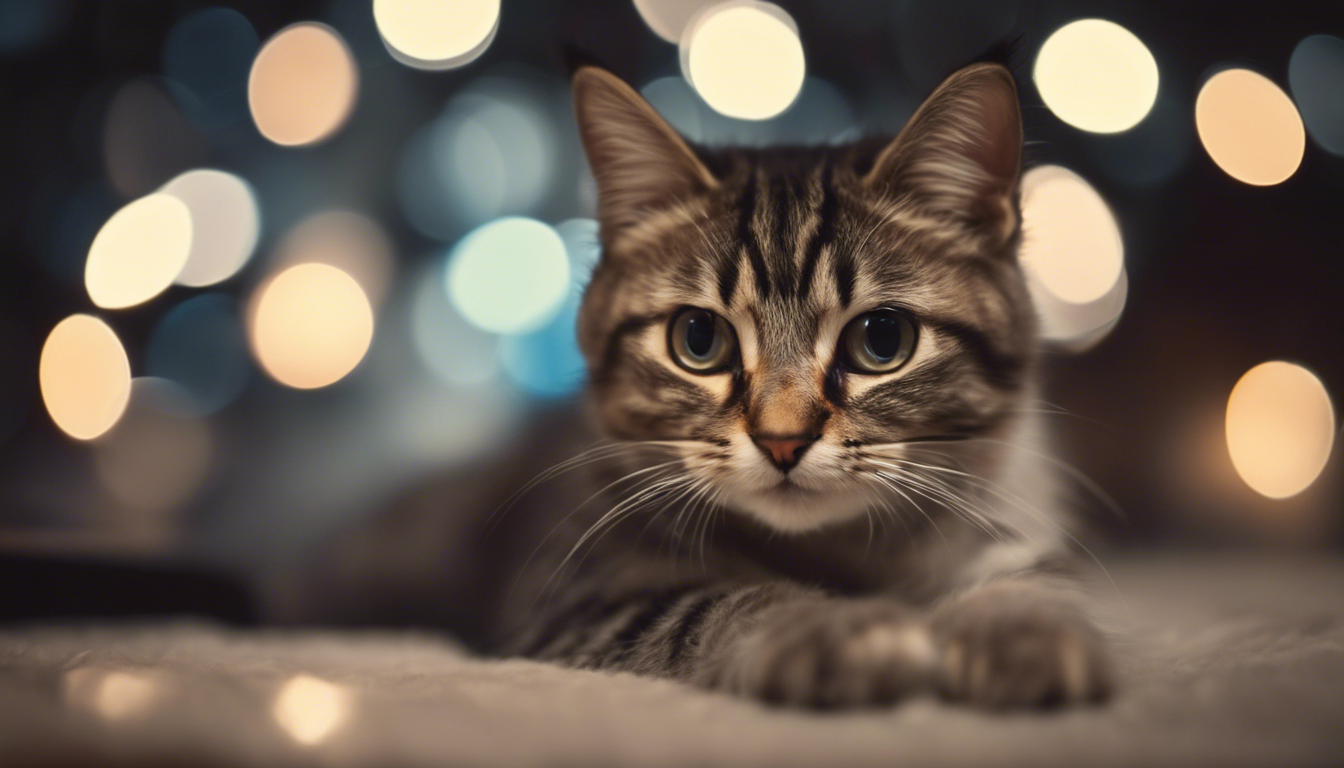
Engaging activities to tire your cat before bedtime
As the stars begin to twinkle, you might notice your feisty feline ramping up for their nightly festivities. To help channel this energy in a positive way, consider like a cat and get creative with pre-bedtime activities. This not only helps tire them out but can also strengthen the bond between you and your kitty.
Interactive Toys: Your living room doesn’t have to turn into a feline Olympics stadium, but you can introduce toys that simulate the thrill of the hunt. A laser pointer zig-zagging across the floor can captivate your cat’s attention and mimic the unpredictable movements of prey. Similarly, a feather wand that darts through the air can bring out the agile acrobat in your cat, leading to leaps and bounds that expend energy and fulfill their natural hunting instincts.
Puzzle Feeders: Engage your cat’s brain by introducing puzzle feeders at this critical time. These toys not only provide physical activity as your cat manipulates them to release treats or kibble, but they also offer mental stimulation as your cat works out the puzzle. It’s a win-win situation where they get a snack and tire out their mind.
Obstacle Courses: Believe it or not, your cat might enjoy a custom-made obstacle course. Use tunnels, boxes, and perches to create a feline adventure park. Encouraging your cat to explore and navigate through these obstacles can be both mentally stimulating and physically draining, ideal for right before bed.
Fetch: Some cats love a good game of fetch almost as much as their canine counterparts. Lightweight balls or mice that can be easily carried in a cat’s mouth make for ideal toys. Toss them, and your cat may run after them, bringing them back for another go. It is a game that encourages activity and interaction.
Catnip or Silver Vine: While catnip might initially excite your cat, it often leads to a period of intense activity followed by a mellow phase. Sprinkling some catnip on a scratch post or inside a toy can turn it into a focal point for a burst of energy. Silver vine is another herb that provides a similar experience for cats, and a playful session with these herbs can be a great way to round off the night.
Remember, each cat is an individual with their own preferences and quirks. Finding the right activity to engage your kitty before bedtime might require some trial and error. Pay attention to what elicits the most joy and use of energy, and make that a regular part of your nightly routine.
By incorporating these engaging activities into your evening schedule, you encourage your cat to associate the hours before your bedtime with fun playtime, which ultimately leads to sleep time. Give your kitty the chance to indulge in these energy-burning games, and you may find they’re more inclined to curl up and dream of chasing butterflies as you doze off to sleep yourself.
Creating a calming nighttime environment for your feline
Once you’ve had your fill of fun and games, and the yawns begin to outnumber the pounces, it’s time to transition to a serene setting that whispers “sweet dreams” to your whiskered companion. Establishing a calm atmosphere can be the gentle nudge your cat needs to cozy up and drift off as you do.
Ponder setting up a comfortable cat bed in a favored spot, perhaps near a radiator or in a quiet corner. Look for one with soft, cushioning material that will keep your cat warm and cozy through the night. You can add an extra touch of comfort by placing a worn t-shirt that smells like you in the bed, as the familiar scent can be very reassuring to your feline friend.
Ambient noise or soft music can also play a role in calming your nocturnal furball. Sounds of nature, like a gentle rain or whispering winds, or soft classical melodies can help muffle the jolts of night-time activity from the outside world that might otherwise pique your cat’s curiosity.
Dim the lights, or even better, use nightlights designed to emit a soft glow that won’t interfere with your cat’s natural sleep cycle. These provide just enough light for your cat to navigate, should they decide to embark on a quiet midnight stroll, without being overstimulating.
An often overlooked factor in creating a restful environment is the temperature of the room. Cats prefer a warm place to snuggle up, so keeping your home at a comfortable temperature during the night can prevent your cat from seeking out less conventional—and more disruptive—heat sources like your head.
For cats that find solace in their sense of smell, pheromone diffusers can work wonders. These mimic the feline facial pheromones that cats use to mark their territory as safe. The diffuser spreads these comforting pheromones throughout the room, helping to alleviate stress and promote relaxation.
In addition to a calming environment, consistency in your own bedtime routine can also signal to your cat that now, let’s wind down. As creatures of habit, cats are reassured by routines not just for themselves, but also in the predictable patterns of their human companions.
Creating a tranquil night-time environment will not only help soothe your cat into sleeping through the night, but it can also enhance the quality of the bond you share. When your cat feels at ease in their space, they’re more likely to feel at ease with you, leading to happy mornings following peaceful nights.
